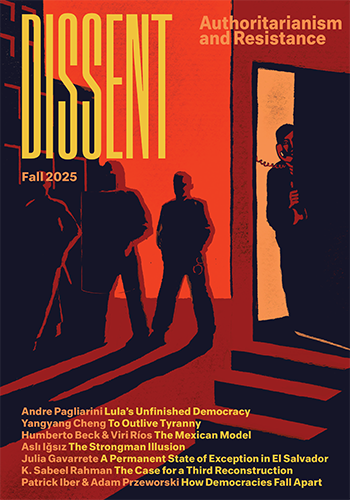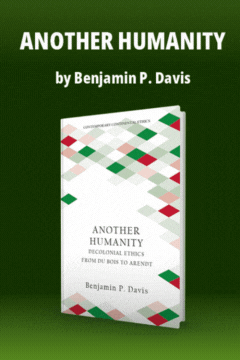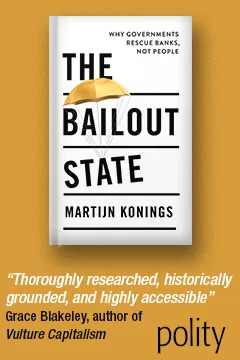Why We Still Need the “University of Innovation”
Why We Still Need the “University of Innovation”

Jeffrey Williams’s article “Innovation for What? The Politics of Inequality in Higher Education” (Winter 2016) is generally on target about one of the disturbing trends in our ever-more-commercializing culture, but I have some reservations about what he didn’t say.
While the corporatization of universities is not the solution to the problem of inequality in higher ed, it is nevertheless the case that our education system has always been limited by the fact that it has targeted young people who have the time and money to spend four or more years on a campus. This has excluded millions of Americans who have work and family responsibilities that make it impossible or extremely difficult to pursue an education. Furthermore, our colleges and universities have tended to ignore people after they are of “college age.” Nor have they focused on the needs of almost all Americans for continuing education as their jobs, interests, and life situations change. (Of course, there are honorable exceptions, like Chicago’s Roosevelt University, which have defied conventional definitions of the mission of higher education.)
While much of the current drive to substitute computer-driven instruction for face-to-face interaction in the classroom is driven by business values and imperatives, it would be foolish to ignore the opportunity that new technologies open up to overcome the above-mentioned limitations of our education system. For many working adults, the pressure of work and family commitments make it all but impossible to attend class regularly on college campuses fifteen to forty-five times a semester. Our transportation systems are inadequate, our work loads fluctuate, and our children, spouses, and parents make irregular demands on us. Online learning, conducted entirely or partially via the internet, makes it possible for many working adults to pursue knowledge. This is especially the case for people who came from disadvantaged backgrounds, who were unable to complete their undergraduate degrees before job and family commitments forced them to leave. “Returning students” are a large constituency that can be served by computer-aided instruction. In addition, adults whose jobs have changed due to promotions, new interests, or developments in technology or industrial environments, often find that computer-aided instruction can help them.
Foes of online learning often claim, as Williams does, that since education is based on “affective engagement,” universities’ drive to offer courses via internet platforms necessarily destroys learning. I disagree. For some students, at some stages in their lives, this is undoubtedly true. An instructor who inspires you with his/her presence, enthusiasm, or moral appeal may certainly engage you in ways that computer-driven instruction cannot. But many students may not necessarily benefit from personal interaction: they may hide in the back of the room, let their more vocal classmates carry the ball, surreptitiously glance at their cell phones, tablets, and laptops, or catch up on much-needed rest after caring for children, meeting job demands, and beating the traffic. Sometimes they’re thinking about what to prepare for dinner, or how to find childcare for their sick children. Online learning makes it possible for students to do their course work when they are most ready to do so, when the children are in bed, their spouse is fed, job demands are light, and so on. Moreover, there are some students who engage as well or better with written words, graphic presentations, structured discussions and debates, and links to a wide world of information than they do with a classroom whose door is closed to the outside world. Furthermore, motivation is another ingredient that contributes to learning. Many students do well in online classes because they are interested in what they are learning, because the material relates to their personal lives, their individual preferences, or their work challenges. It’s the teacher’s responsibility to design a course that multiple students connect to, and this is true of in-person classes as well as online ones.
Finally, online teaching and learning offers educators the opportunity to build global classrooms of students who share a common interest, people who are already motivated by their desire to learn about a topic ignored by a brick-and-mortar institution that can’t fill a classroom with enough students to justify a course offering. This is our challenge. While cable TV channels, broadcasters, social media sites, and advertisers have been learning to identify and reach narrow audiences by tracking digital information, educators are falling far behind. At Rutgers University’s Department of Labor Studies and Employment Relations, where I teach, we’ve effectively learned how to use computer-aided instruction, including asynchronous online classes, to reach students within our region after ten years of painful trial and error.
However, we haven’t yet figured out how to reach students in India, China, Mexico, or Germany who face the same intellectual and political challenges and quandaries that our local students do. I would love to put together a course comparing how workers and workplaces? around the globe are combating the trend toward what David Weil calls “the fissured workplace,” where employers have succeeded at evading responsibility for adhering to labor laws and standards. But how do I identify prospective students? How will I reach them? How can I bridge the constraints inherent in degree-granting institutions that have varied curricular frameworks, teach in a variety of languages, and are based on different business models? There is plenty of room for innovation here, for hard work, experimentation, and sharing across universities, disciplines and continents. Just because many universities have pursued online learning as a way to cut labor costs, we shouldn’t abandon the field. Our future also lies in this direction. Our goal must be to broaden educational opportunity for everyone, not just the most advantaged.
David Bensman teaches in the Department of Labor Studies & Employment Relations at Rutgers University, and is on the editorial board of Dissent.
Jeffrey Williams responds:
In my observation, “innovation” has been accepted, indeed celebrated, as a keyword and central value of contemporary American life. Yet innovation has a dubious record, so I think that we need to question it, and the use to which it is put, as it largely goes without saying, everyone nodding, yes, we need to innovate. . . .
We should ask, in the era of rampant innovation, what is the actual record of our innovations? We have amazing handheld devices, but if one considers the substantial rise in inequality over the past thirty years, as well as the decline in political representation in the United States, the record is woeful. Those are innovations in our public sphere, and they are not unrelated to the ecology that produces handheld devices, finance capital to start the companies making them, and so on.
My essay focused specifically on higher education, and over the past thirty years the American system has become much more severely stratified, among schools, among faculty, and among students. For students, the deregulation and precipitous increase of student debt was a financial and policy innovation, and a very successful one for those who held shares in Sallie Mae and other financial services. In terms of labor, the innovation in shifting to a mass of adjunct, casual, or contingent positions, creating the “new faculty majority,” was likewise a very successful innovation for management and finance. In turn, there was an innovation in governance, from faculty control to top-down management—that calls for yet more innovation. It was a successful innovation for those in its ranks, whose power rose and who attained high salaries.
As I note in my essay, “Innovation for What?” the bulk of online courses follows these developments, stratifying higher education, students, and labor. Of course some innovations are beneficial, but given the empirical record, you don’t have to be an Althusserian to recognize that “innovation” carries a lot of ideological water. The word largely represents the thoroughgoing capture of our thinking and policy by tech-oriented, consumerist finance and production, rather than, say, values of public services or humane citizenship.
Moreover, its genius is that it makes it seem as if no one is responsible for all of these bad social results. We have to innovate because this is the way things are. (Bensman shows this resignation in his noting that “transportation systems are inadequate,” etc.) This is why Bernie has traction—because those entering our political system don’t want to swallow this and say they like it.
I’m glad that David Bensman found my essay “generally on target,” and I support his pointing out the many students who have alternative paths through higher ed. Actually, only a minority of students are traditional college age, so it does raise the question, how can we develop higher education better to serve them? As a long-time teacher, I’m not against online as one practice in our quiver of practices. However, Bensman suggests that it is the only thing poor students can use—whereas online courses have a terrible record of completion. Students who aren’t engaged in class are not more likely to be engaged online, as he very hopefully suggests.
But he and I are for the same things, and I would actually like to hear about his program at Rutgers, particularly the “painful trial and error,” as we often learn more from our mistakes than our successes. My point is that much of the innovation in American higher education has been painful for too many people—ask your millennial students with serious debt and high payments, with not-so-peachy jobs—so we need to learn from those errors, and correct them. In all the cheerleading for innovation, I hear very little of that.






